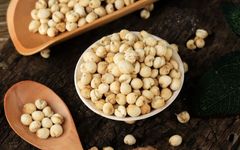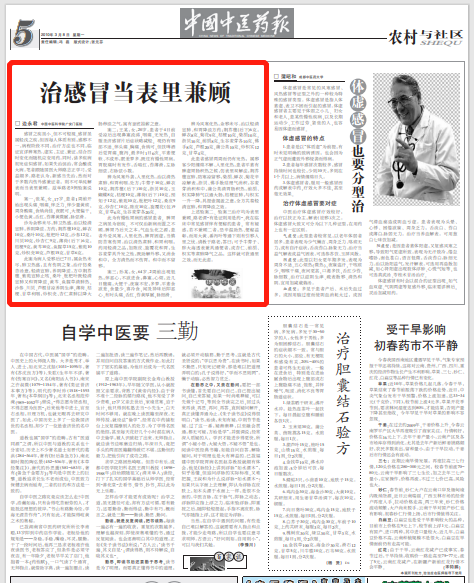
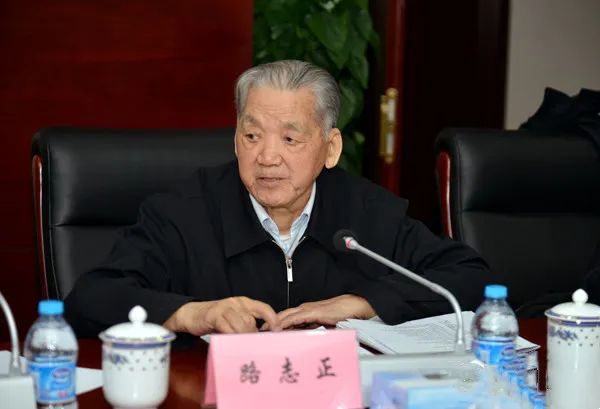
▲Lu Zhizheng (1920.12-2023.1.20), the first Master of Traditional Chinese Medicine, Chief Physician at the China Academy of Chinese Medical Sciences
Although the common cold is a minor illness, it should not be underestimated. While the cold is considered a mild ailment, due to individual differences in constitution and the nature of the pathogenic factors, as well as varying stages of the illness, treatment methods differ. Clinical practice requires careful differentiation of cold-heat, deficiency-excess, principal symptoms, and accompanying symptoms, adapting the treatment according to seasonal changes. Additionally, many diseases initially present with symptoms similar to a cold; if misdiagnosed or improperly treated, they can lead to serious conditions. Master Lu believes that new colds should be treated promptly; however, for most patients with both internal and external injuries, one should not simply focus on relieving the exterior but should also address both the exterior and interior. Here, I present three case studies from Master Lu for the benefit of my colleagues.
Case One:
Patient Zhang, female, 17 years old. The patient began experiencing headaches, sore throat, fatigue, and a small amount of yellow phlegm one week ago, along with body aches. Her appetite was good, she slept well at night, her stool was somewhat dry, her urine was yellow, her tongue was red with a thin yellow slightly greasy coating, and her pulse was wiry and slippery.
Diagnosed as residual pathogenic heat in the lungs. Treatment involved lightly clearing and dispersing lung heat, nourishing yin, and descending rebellious qi.
Prescription:Jing Jie Sui (Schizonepeta spike) 10g, Chan Yi (Cicada molting) 10g, Sang Ye (Mulberry leaf) 10g, Pi Pa Ye (Loquat leaf) 12g, Sha Shen (Glehnia root) 12g, Chuan Bei Mu (Fritillaria) 10g, Chao Xing Ren (Fried apricot kernel) 9g, Bo He (Peppermint, added later) 6g, Jie Geng (Platycodon) 9g, Huang Qin (Scutellaria) 10g, Yu Xing Cao (Houttuynia) 15g, Zi Yuan (Aster) 10g, Chao Zhi Qiao (Fried bitter orange) 10g, Lu Gen (Reed rhizome) 15g, Gan Cao (Licorice) 6g.
This case involved a patient who had been affected by a pathogenic factor for 7 days, characterized by residual heat and lung heat excess, with signs of yin injury. The treatment was based on the principles of Sang Xing Tang, lightly clearing and dispersing lung heat while nourishing yin and descending rebellious qi. The ingredients Jing Jie Sui and Zi Yuan disperse lung heat and stop cough, Sang Ye and Pi Pa Ye both lightly clear the lungs and harmonize the stomach, Huang Qin and Yu Xing Cao clear lung heat, Sha Shen, Chuan Bei Mu, and Lu Gen nourish yin and generate fluids, Bo He, Jie Geng, and Gan Cao benefit the throat, while Chao Zhi Qiao and Xing Ren clear the lungs to descend the turbid qi of the large intestine, embodying the principle of cutting off the source of the problem.
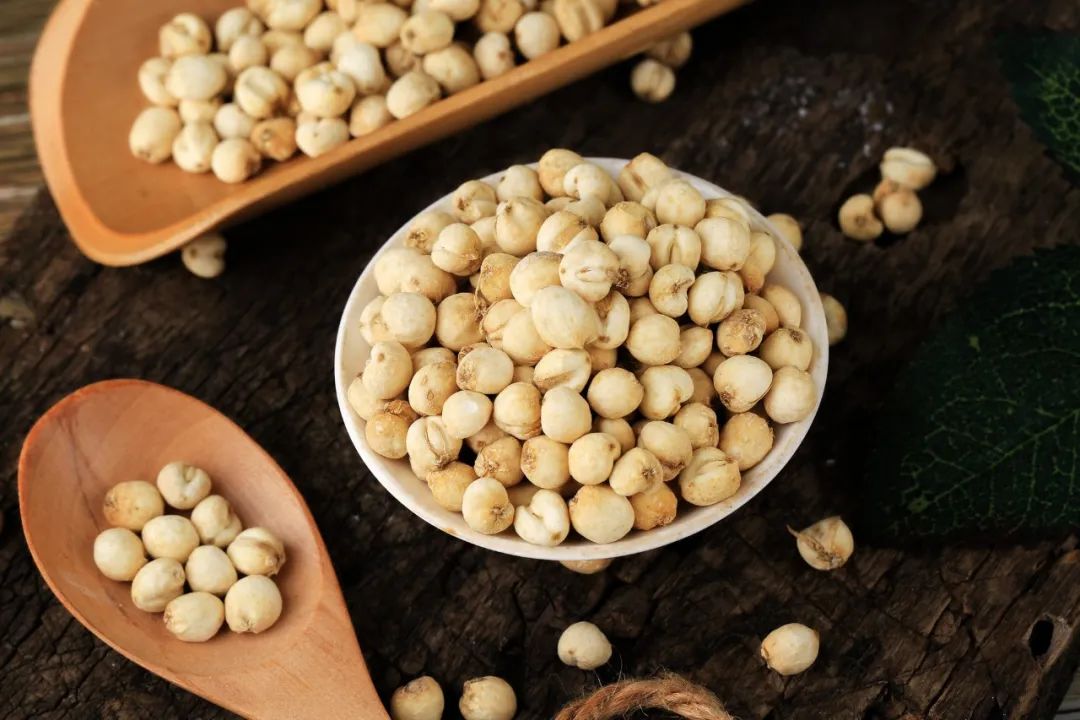
▲Chuan Bei Mu
Case Two:
Patient Wang, female, 20 years old. The patient developed nasal congestion and runny nose after being chilled 4 days ago, with a sore throat but no fever. After taking Sheng Ji Cold Medicine, her symptoms slightly improved, but she still felt discomfort in her throat, accompanied by headaches and chest pain. Her appetite was good, but after drinking beer, she experienced stomach pain and diarrhea, up to 6 times a day, with soft and unformed stools. She had poor sleep with many dreams. She had a history of chronic gastritis, with intermittent stomach pain. Her tongue was dark red, with a thin slippery coating, the left pulse was thin and wiry, and the right pulse was wiry and slightly weak.
Diagnosed as wind-cold invasion leading to internal heat transformation. Treatment involved clearing heat, dispersing lung heat, harmonizing the stomach, and benefiting the throat.
Prescription:Niubangzi (Burdock seed) 10g, Chan Yi (Cicada molting) 10g, Jing Jie Sui (added later) 10g, Zhe Bei Mu (Zhejiang fritillaria) 10g, Yu Hu Die (Butterfly pea flower) 8g, Jie Geng (Platycodon) 10g, Bo He (Peppermint, added later) 10g, Yu Zhi Zi (Gardenia) 12g, Zi Yuan (Aster) 10g, Pi Pa Ye (Loquat leaf) 12g, Sang Pi (Mulberry bark) 9g, Chao Xing Ren (Fried apricot kernel) 10g, Chen Pi (Dried tangerine peel) 10g, Xuan Fu Hua (Inula flower, wrapped) 9g, Gan Cao (Licorice) 6g, Sheng Gu Mai (Barley malt) 20g each.
This case involved a patient with a cold and a history of chronic gastritis. Although the stomach condition was a pre-existing issue, it should not be neglected while treating the new illness. The spleen and stomach are the foundation of postnatal health and the source of qi and blood. The patient was externally affected by wind-cold, leading to internal heat transformation, and her spleen and stomach were weak. Therefore, care must be taken to avoid using excessively cold herbs that could harm the stomach. The treatment involved clearing heat and dispersing lung heat, harmonizing the stomach, and benefiting the throat, using light and clear herbs, along with Chen Pi and Xuan Fu Hua to harmonize the stomach. Sheng Gu Mai has a lifting effect, assisting in expelling the external pathogen while also aiding digestion and harmonizing the middle, ensuring the overall treatment clears heat without harming the stomach and harmonizes without leaving pathogens behind.
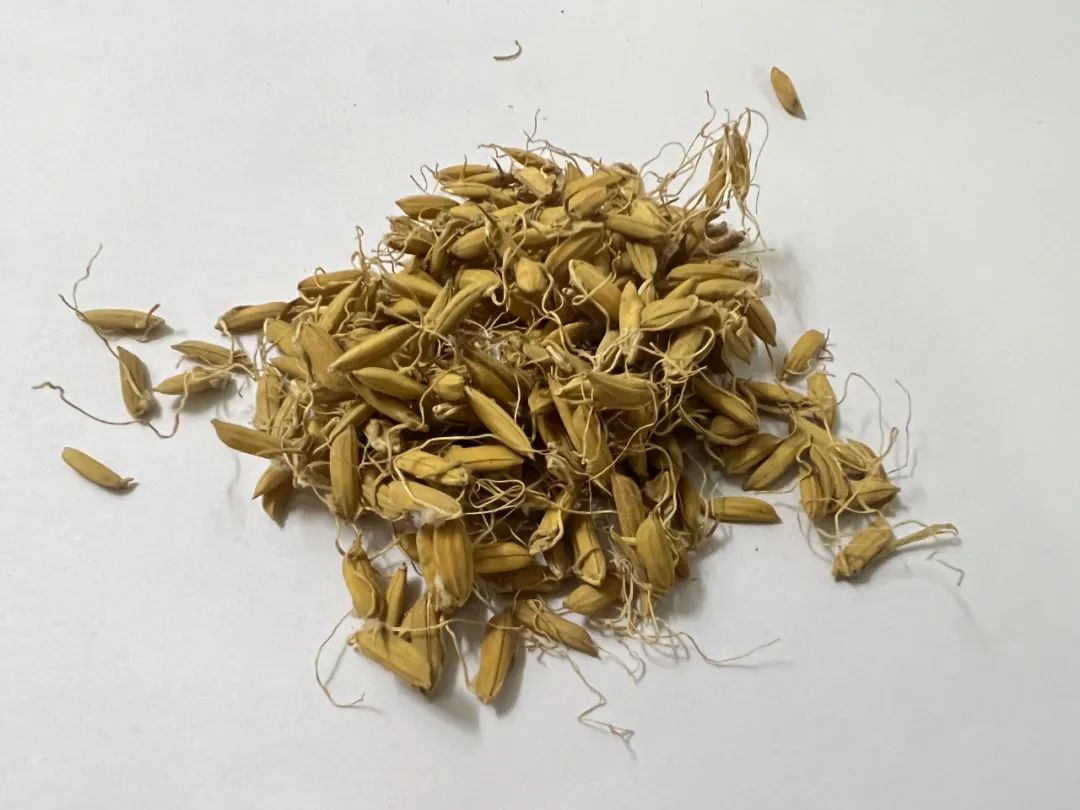
▲Gu Mai (Barley malt)
Case Three:
Patient Sun, female, 64 years old. Two weeks ago, she developed a low fever, accompanied by nausea, loss of appetite, nasal congestion, and irritability. In recent days, she experienced abdominal pain, dry stools, and restless sleep with many dreams. She usually has a poor appetite, eats little, prefers cold foods, and feels nauseous upon smelling strong odors, sometimes accompanied by headaches. Her tongue was red, with a thick yellow greasy coating, and her pulse was thin and slippery.
Diagnosed as wind-cold transforming into heat, with residual pathogenic factors. Treatment involved lightly clearing and dispersing lung heat, harmonizing the stomach, and descending turbidity.
Prescription:Jing Jie Sui (added later) 6g, Chan Yi (Cicada molting) 8g, Ju Hua (Chrysanthemum) 9g, Jie Geng (Platycodon) 10g, Chai Hu (Bupleurum) 10g, Zhe Bei Mu (Zhejiang fritillaria) 10g, Qian Hu (Peucedanum) 8g, Sheng Gu Mai (Barley malt) 10g each, Fo Shou (Buddha’s hand) 8g, Lu Gen (Reed rhizome) 20g, Pu Gong Ying (Dandelion) 10g, Chao Zhi Shi (Fried bitter orange) 12g, Gan Cao (Licorice) 4g.
This patient had a cold for two weeks with persistent fever, indicating lingering pathogenic factors affecting the Shaoyang channel, leading to internal heat transformation. The patient usually has signs of spleen deficiency and gastrointestinal heat accumulation. The treatment was based on the principle of addressing both the exterior and interior. Jing Jie Sui disperses lung heat, preventing cold from lingering, while Chai Hu, Chan Yi, and Ju Hua release the exterior with a cooling effect. Zhe Bei Mu and Fo Shou resolve phlegm and regulate qi to eliminate accumulation, while Sheng Gu Mai aids digestion and harmonizes the middle. Pu Gong Ying clears gastrointestinal heat, and Qian Hu and Zhi Shi descend lung qi to facilitate bowel movements. Jie Geng disperses lung heat, and Zhi Shi provides a lifting and descending effect, embodying the principle of lifting the lid and revealing the pot. The overall treatment effectively clears lung heat and harmonizes the stomach while descending turbidity.
In the above cases, both Case Two and Case Three treatments focused on addressing both the exterior and interior. Master Lu stated, “Use the appropriate herbs for the corresponding symptoms.” In clinical practice, it is common to see patients with colds accompanied by constipation, leading to confusion. If both conditions are not addressed, using warming herbs may exacerbate heat and constipation, while using purgatives like Da Huang (Rhubarb) or Fan Xie Ye (Senna) may risk drawing pathogens into the interior. When consulting with Master Lu, he suggested using Niubangzi (Burdock seed) or Pang Da Hai (Sterculia) to disperse the exterior while also facilitating bowel movements, or using Xing Ren (Apricot kernel), Qian Hu (Peucedanum), or Zhi Shi (Bitter orange) to clear lung qi, thus achieving the effect of unblocking the interior without such concerns.
Important Notice:
Due to individual differences in constitution and illness, the prescriptions and dosages in these cases are only applicable to the specific patients at the time of their illness. Without proper TCM diagnosis and treatment, do not replicate the prescriptions and dosages from these cases. Readers in need should seek treatment at a reputable hospital to avoid delaying their condition.

Source|China Traditional Chinese Medicine News, content excerpted from the March 8, 2010, fifth edition of the “China Traditional Chinese Medicine News,”Bian Yongjun, Guang’anmen Hospital, China Academy of Chinese Medical Sciences
Editor|Shan Lai Editing Team
